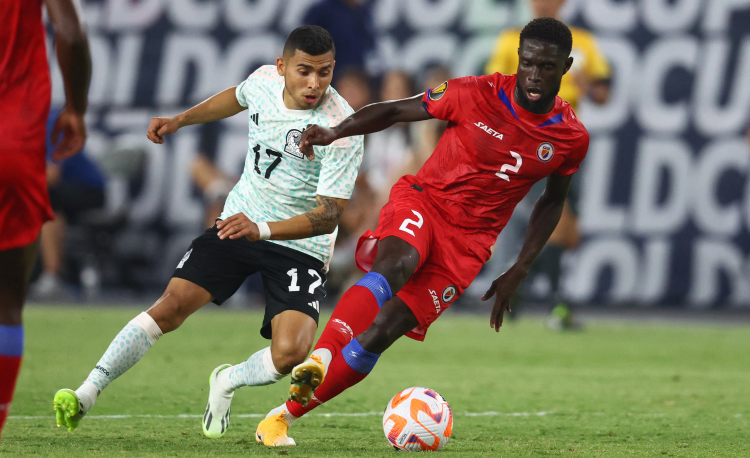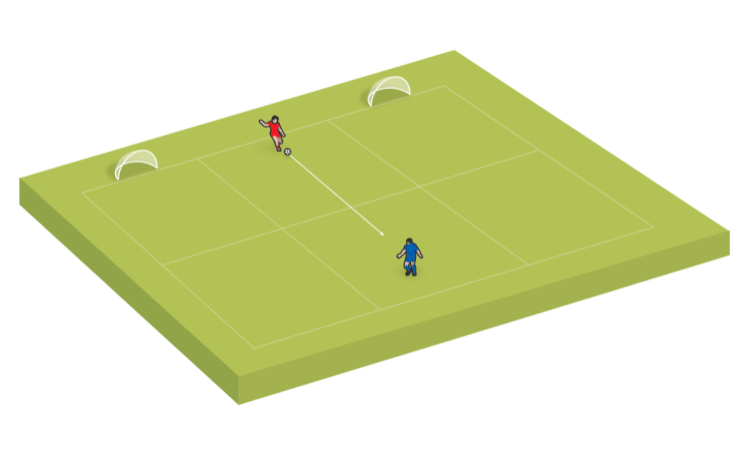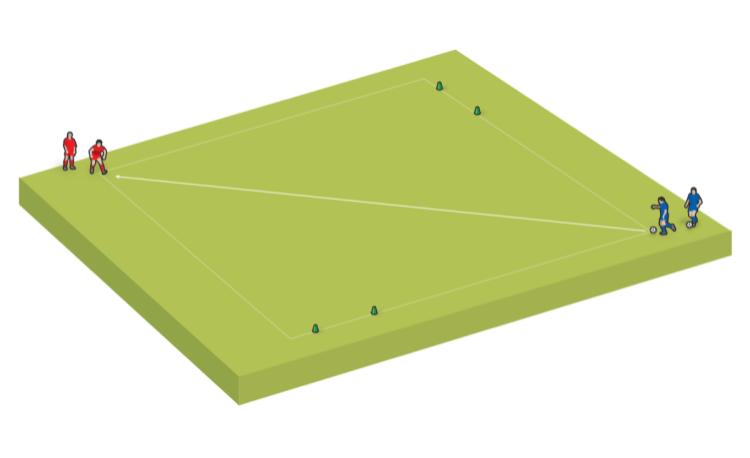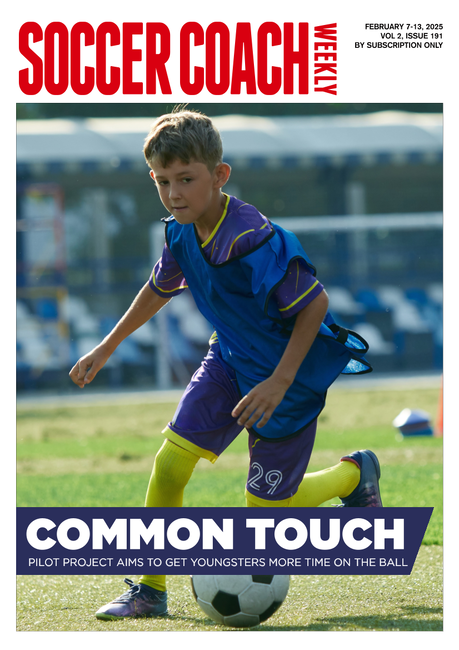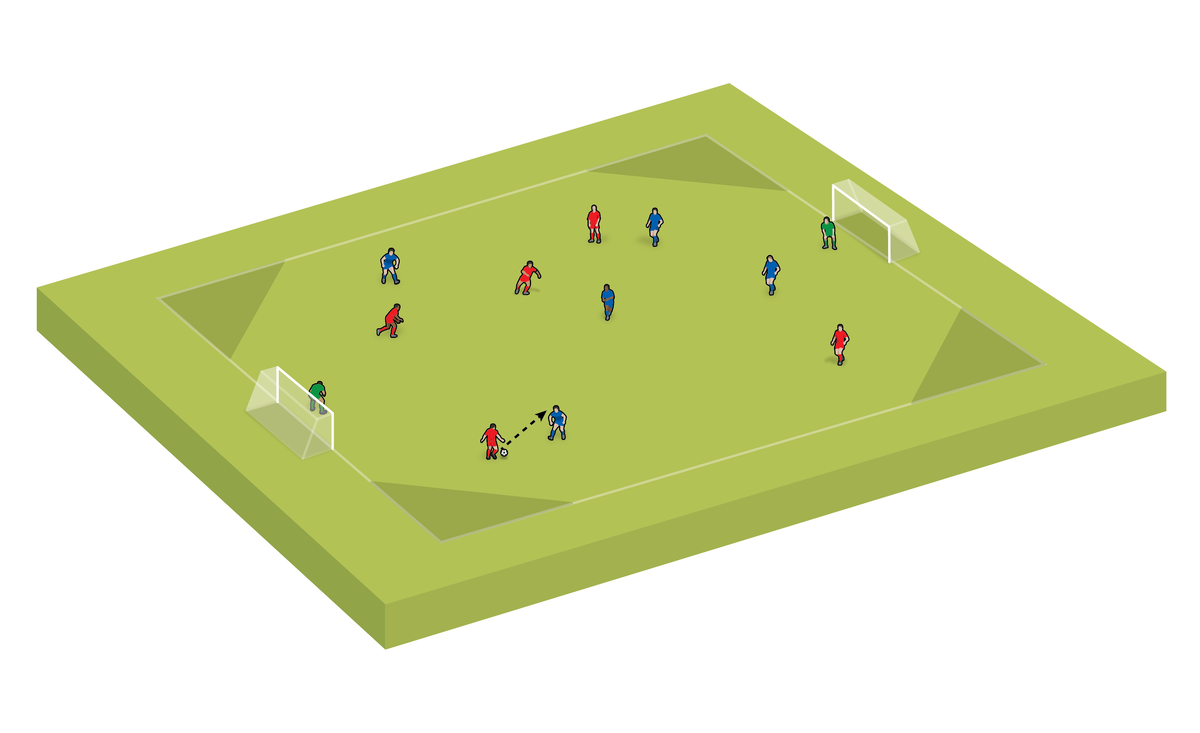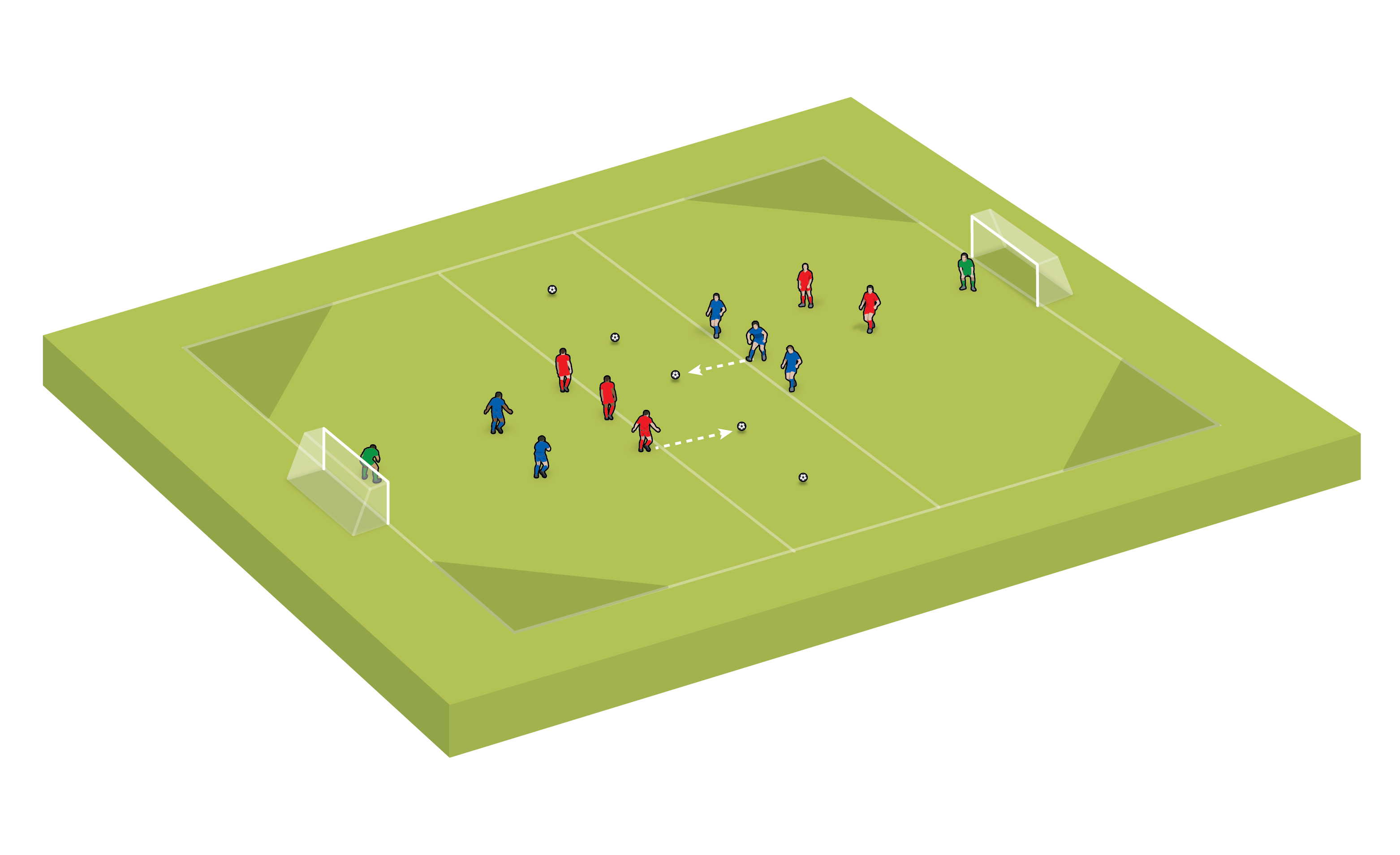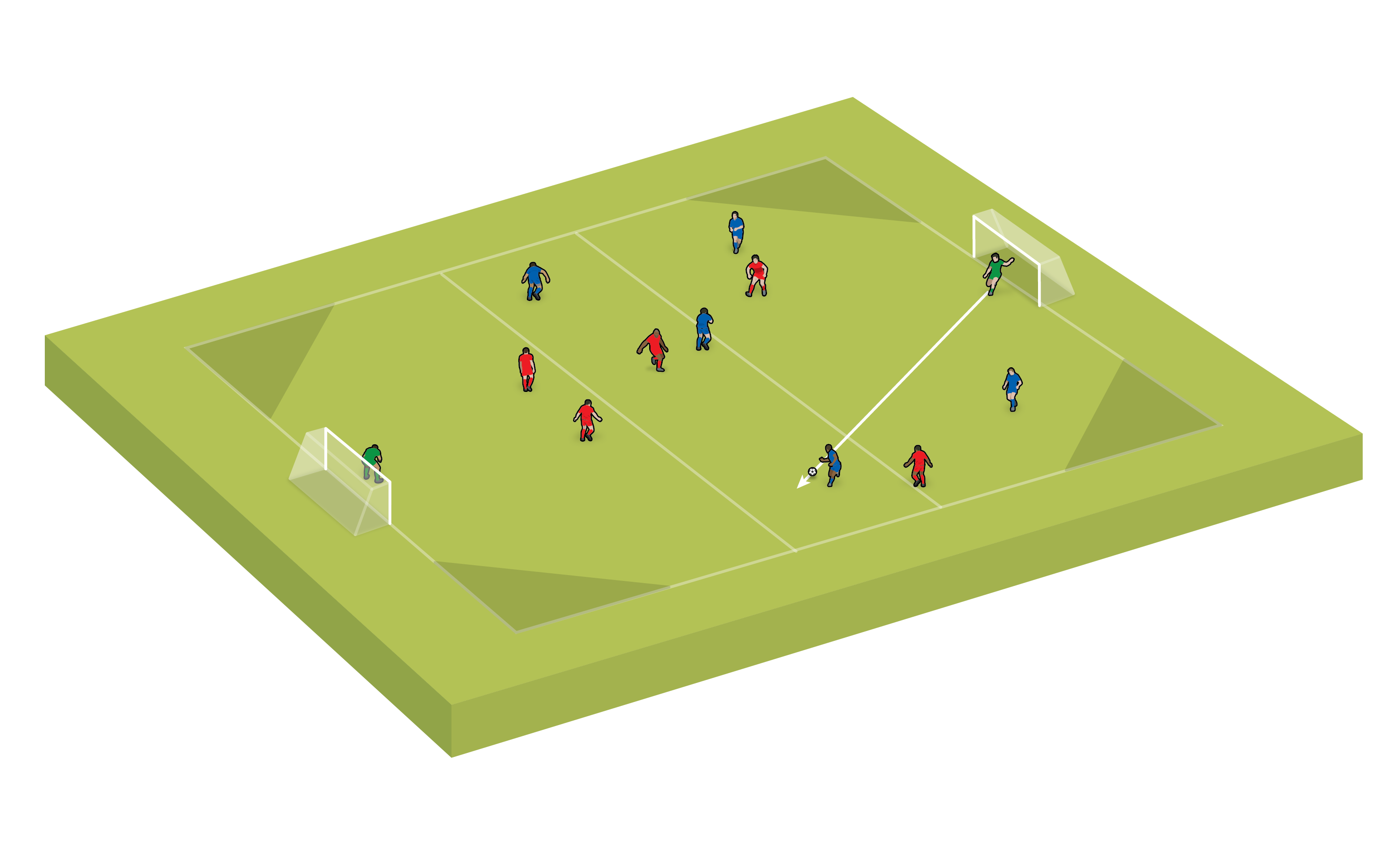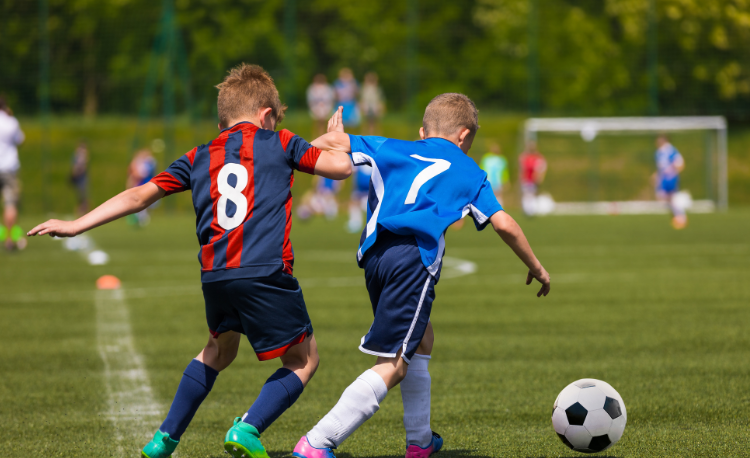What is turning?
Carl Wild gives first-timers a guide on how to move away from opponents and into space.
Turning involves a player changing direction while they are in possession of the ball.
This could be when they are stationary - for instance, they have just received a pass from a team-mate and want to change the way they are facing - or when they are moving with the ball, either running with it or dribbling.
In both instances, they could be under pressure from an opponent or unopposed.
The key element to turning is that after a player has performed the actual turn, they are no longer facing or travelling in the same direction they were before.
For example, they could be traveling towards the opposition’s goal and then, after completing the turn, they are now moving away from it.
This change in direction can also last for just a split second. A player might choose to turn again immediately after completing a turn, known as a double turn. When they do this, they end up facing the same way as when they started.
Why do we turn?
To face the way we want to
The most basic reason a player chooses to turn is because they are not facing the way they want to.
When facing their own goal, a player will want to turn so the ball is pointing towards the opposition’s goal instead.
"Turning contributes to a number of the key in-possession principles of soccer..."
This supports the main principles of soccer and, indeed, any other invasion game; to get the ball closer to the opponent’s goal so you can try and score, while also keeping the ball away from your own goal which will prevent the opposition from scoring.
Turning therefore contributes to a number of key in-possession principles of soccer.
In the instance where a player wants to turn to face the opposition goal, it is likely because they are being pressurised by an opposing player. If they were in space and unopposed, they would be in a position to receive the ball on their back foot with an open body shape, removing the need to turn.
If they haven’t received the ball in this way, they could take their time in changing the way they are facing, therefore not really completing a turning action which, when performed effectively, should be quick and sharp.
To get away from danger and protect the ball
The other main reason why players will look to execute a turn during a game is to get away from danger and protect the ball.
If a player is under pressure from an opponent, and it appears that they may lose possession, executing a turn can provide them with time and space, which can then be used to move the ball away from danger, either by the player accelerating away or by them passing it onto a team-mate.
A player can use a turn so that they are then able to complete another action.
For example, if a player wants to cross the ball but are being prevented from doing so by a defender, they may feint to cross and instead execute a turn. The cross can then be executed using the space that has been created by the turn.
A player may also do this to enable them to get a shot on goal.
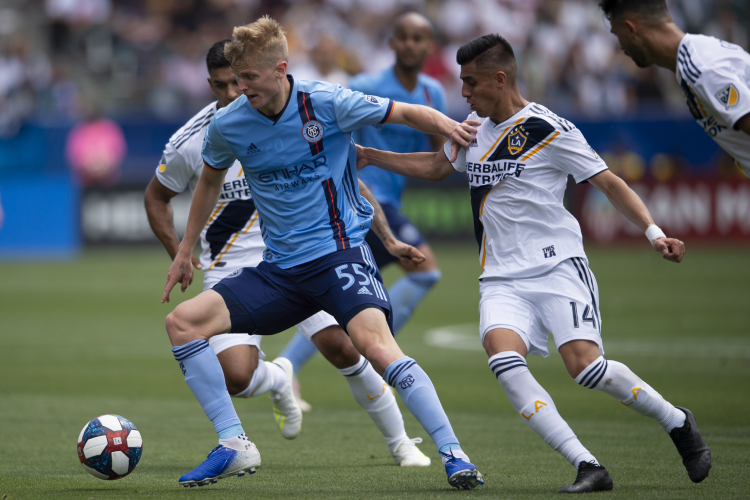
How do we turn?
Different types of turn will require different specific actions, but there are also some consistent elements that are needed, no matter how or when the player turns with the ball. These are:
- Having knees bent to ensure a steady platform from which to complete the turn. It also gives the ability to change direction quickly and to accelerate away if needed.
- Scanning before a turn, to be aware of what is around. Players cannot afford to turn straight into danger; they need to ensure that the new direction they will be facing is clear and there is space to move into.
Turning to face the way we want
Protecting the ball
When a player executes a turn while stationary, with an opponent attempting to stop them from turning, the first thing they need to do is protect, or ‘shield’, the ball.
When receiving the pass, the player needs to be side-on with a wide stance, receiving the ball on the foot closest to the team-mate who played the pass and furthest away from the opponent.
By doing so, they will have a strong platform from which they can anchor themselves to the spot and resist being pushed off the ball.
In receiving the pass this way, it will also place the ball out of the reach of the defender. It will put the player’s body in between the ball and the defender.
The player should also keep the defender at a distance by placing their forearm up against them. Not only will this help keep the defender away from the ball, it also allows the player to ‘feel’ where the defender is positioned.
Executing the turn
Once the player is in this strong and stable position to protect the ball, the next part of the process is to actually execute the turn.
To achieve this, the player will need to get their opponent to shift their body one way before exploiting the other side, in a similar way in which they would go past a defender in a 1v1 situation.
This can be achieved by feinting, which can be performed in a number of ways. It mainly involves shifting the body position and weight to the side you want the defender to think you are going and, at the same time, pretending to shift the ball the same way - before quickly shifting the ball in the opposition direction and turning in the same movement.
Once this has been achieved, the player then needs to complete the next action – running with the ball or getting a shot on goal, for example – quickly and decisively.
Related Files
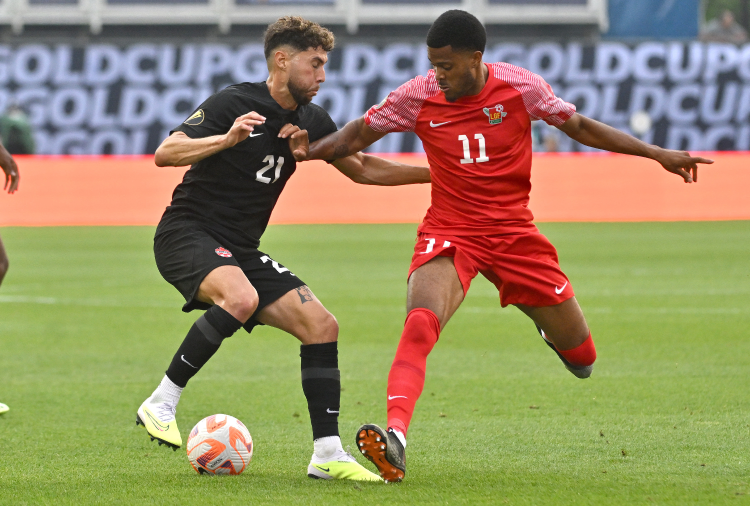
Turning to get away from danger and protect the ball
Timing and speed
When turning to get away from danger and protect the ball, the main focus should be on the timing and speed in which the turn is completed.
When considering the timing of the turn, the player on the ball will need to take a number of factors into consideration: is the defender close to winning the ball? Are they running out of space? Where do they want to go and what do they want to do?
If we go back to the example of the player wanting to cross the ball, they need to take into consideration that the defender will want to stop the cross and the best way in which to do this is to win the ball.
They will also need to be aware of the touchline and the space available to complete the cross. Therefore, the most effective time to complete the turn is probably at the point when the defender is expecting them to cross the ball.
Once the time to complete the turn has been identified, it must then be executed quickly. Continuing with the theme of the player attempting to cross the ball, once the defender has recognised their opponent is not actually crossing but turning, they will look to close them down again.
This means the space and time created by turning won’t be long lasting. So the longer it takes a player to turn, the less time they will have before the defender closes off the space again.
To achieve a quick turn, the movements need to be sharp and the touches need to be limited, realistically to just one or two, depending on which actual turn is used.
Disguise
Alongside these two key components of this particular type of turn, it also helps in this situation if the player is able to put a lot of disguise on it.
This is achieved by the player exaggerating the action before the turn and tricking the defender into thinking that they are about to do something else rather than the turn - for example, making the defender think they are going to cross the ball instead of turning.
This can often be achieved through an exaggeration of movements that would suggest the next action to be performed is a cross.
This could be the raising of the arm that players use to help them remain balanced while making a lofted pass or cross, or the positioning or action of the kicking foot.
Using this disguise will give the player even more time and space to complete the next action.
Developing a player’s turning skills
To develop turning skills, players need time on the ball to explore and experiment with the way it moves and the way they can manipulate it.
It is also important that players are put in environments where they have an opportunity to perform and practice turning, getting used to the different contexts around them in which they can perform turns.
Newsletter Sign Up
Coaches Testimonials

Gerald Kearney, Downtown Las Vegas Soccer Club

Paul Butler, Florida, USA

Rick Shields, Springboro, USA

Tony Green, Pierrefonds Titans, Quebec, Canada
Subscribe Today
Discover the simple way to become a more effective, more successful soccer coach
In a recent survey 89% of subscribers said Soccer Coach Weekly makes them more confident, 91% said Soccer Coach Weekly makes them a more effective coach and 93% said Soccer Coach Weekly makes them more inspired.
*includes 3 coaching manuals
Get Weekly Inspiration
All the latest techniques and approaches
Soccer Coach Weekly offers proven and easy to use soccer drills, coaching sessions, practice plans, small-sided games, warm-ups, training tips and advice.
We've been at the cutting edge of soccer coaching since we launched in 2007, creating resources for the grassroots youth coach, following best practice from around the world and insights from the professional game.
